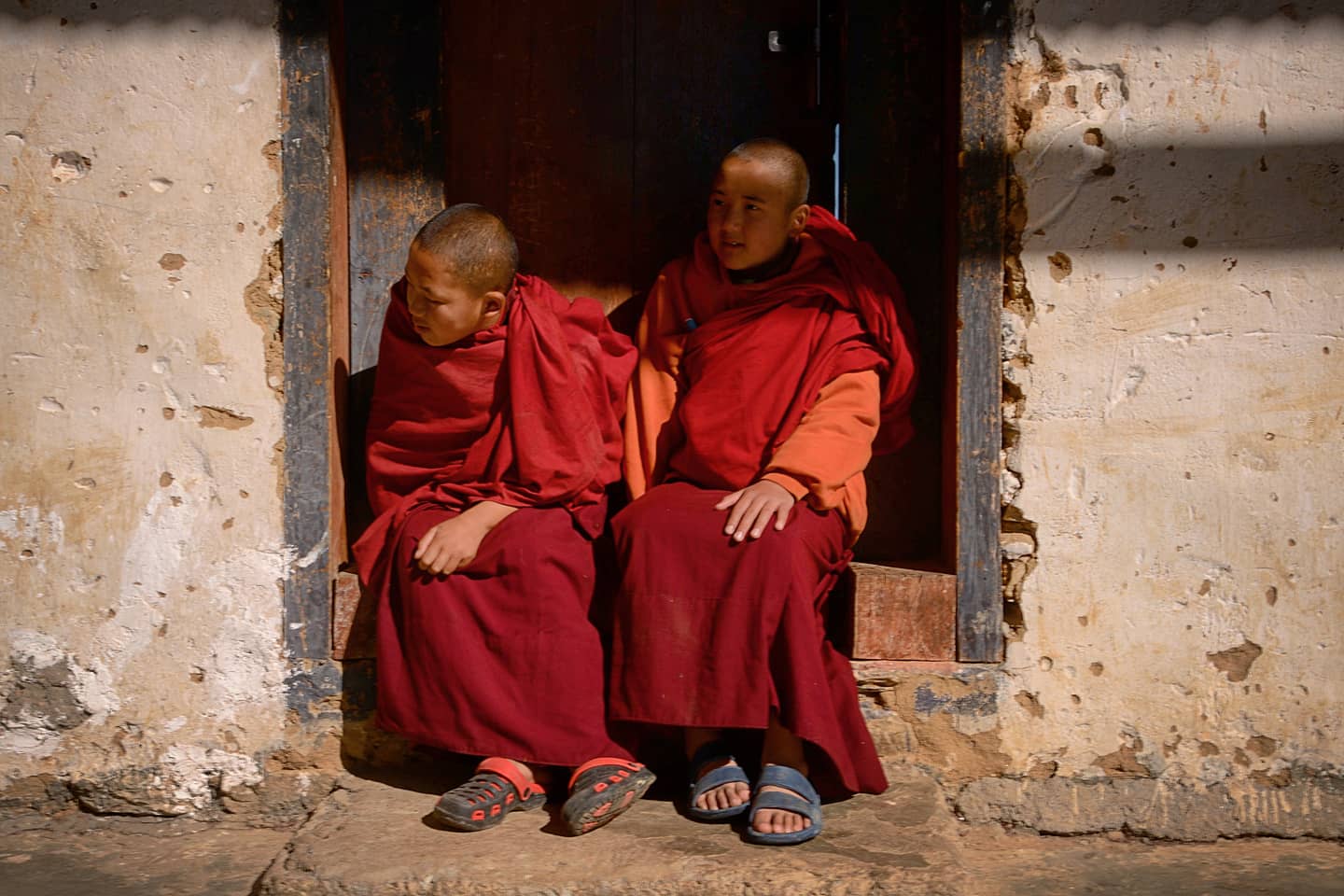Bhutan’s unique geography, nestled in the Eastern Himalayas, creates a diverse range of climates—from subtropical valleys to alpine highlands. This guide provides an overview of Bhutan’s seasonal weather patterns, temperature ranges, and rainfall across major cities, helping travelers choose the best time to visit. Whether you’re drawn by spring’s blossoming flowers, the lush greenery of monsoon summer, crisp autumn skies, or serene snowy winters, knowing the climate is key to a comfortable journey. Alongside weather insights, practical packing advice ensures you’re prepared for Bhutan’s varying altitudes and cultural customs. From warm layers and sturdy footwear to sun protection and respectful temple attire, this guide equips you for all conditions.
Table of Contents
Climate, Temperature & Rainfall of Bhutan’s Major Cities
Bhutan’s diverse and dramatic terrain creates significant variations in climate, temperature, and rainfall across its regions and seasons. Understanding these patterns helps travelers choose the best time to visit and pack accordingly.
- Spring (March–May) and Autumn (September–November) are the ideal times to visit Bhutan. These seasons offer mild temperatures, low rainfall, and clear skies—perfect conditions for sightseeing, trekking, and enjoying the vibrant blooms of spring or the crisp, clear views of autumn.
- Summer (June–August) marks the monsoon season, bringing heavy rains, warm to hot temperatures, and lush green landscapes. Travel during this time may be affected by muddy trails and occasional landslides, so it’s best suited for nature enthusiasts who don’t mind wet weather.
- Winter (December–February) is cold and dry, especially in higher altitudes where temperatures can drop significantly. Warm clothing is essential, particularly for chilly mornings and evenings.
Overview by Season
| Season | Months | Average Temp | Climate Features | Travel Recommendation |
| Spring | Mar – May | 8–15°C (46–59°F) | Mild and pleasant; flowers in full bloom | One of the best seasons to visit Bhutan; ideal for flower viewing |
| Summer | Jun – Aug | 15–20°C (59–68°F) | Rainy season; lush vegetation | Suitable for nature lovers and greenery fans |
| Autumn | Sep – Nov | 10–15°C (50–59°F) | Sunny and dry with high visibility | Best season to enjoy Himalayan views |
| Winter | Dec – Feb | 0–8°C (32–46°F) | Cold and dry; possible snowfall | Ideal for experiencing snowy landscapes |
Overview by Location
| Place | Elevation (m / ft) | Climate Type | Seasonal Characteristics |
| Paro | 2,200 m / 7,200 ft | Temperate | Dry, sunny springs/autumns; wet summers; cold winters |
| Thimphu | 2,334 m / 7,656 ft | Cool temperate | Mild springs/autumns; wet summers; cold, dry winters |
| Punakha | 1,200 m / 3,937 ft | Subtropical valley | Warm, humid summers; mild winters; dry spring and autumn |
| Wangdue Phodrang | 1,300 m / 4,265 ft | Warm subtropical | Hot, rainy summers; mild winters |
| Trongsa | 2,180 m / 7,150 ft | Mountainous temperate | Misty springs; rainy summers; dry autumns; cold winters |
| Bumthang | 2,600–4,000 m / 8,500 –13,000 ft | Highland alpine | Cold winters; mild summers; dry autumn and spring |
For accurate and up-to-date weather forecasts in Bhutan, it is recommended to check the official website of the Bhutan Department of Hydro-Met Services for local insights, Meteoblue and AccuWeather for detailed and reliable information.
Bhutan Travel Packing List
General Packing Essentials
When preparing for Bhutan, layering is key due to varying altitudes and temperatures. Warm clothing for chilly evenings, sturdy shoes for trekking, and waterproof gear for unpredictable weather are essentials. Don’t forget sun protection, medications, and a good camera to capture Bhutan’s stunning scenery.
Clothing
- Warm layers: insulated jackets, fleece, sweaters, thermal underwear, long-sleeved shirts
- Long pants: durable, comfortable (at least 2 pairs)
- Cold-weather accessories: scarf, gloves, warm hat (especially for winter/high altitudes)
- Hiking boots or sturdy walking shoes (well broken-in) for trekking and Tiger’s Nest visits
- Waterproof jacket and pants
- Warm socks: wool or synthetic (multiple pairs)
- Casual clothes for towns and hotels
- Modest clothing (long sleeves and pants/skirts covering knees and shoulders) for temples
- Slip-on shoes for easy removal at temples
- Sleepwear and undergarments
Gear & Essentials
- Daypack or backpack for daily excursions
- Reusable water bottle (widely refillable)
- Sun protection: sunglasses, wide-brimmed hat, high-SPF sunscreen
- Camera with extra batteries/memory cards
- Portable power bank
- Power adapter (Bhutan uses 230V; plug types D, F, G)
- Basic toiletries (toothbrush, toothpaste, shampoo, etc.)
- Personal medications including digestion aids, painkillers, anti-diarrhea tablets, etc.
- Lip balm and moisturizer (to combat dry mountain air)
- First-aid kit (bandages, antiseptic wipes, pain relievers)
- Travel documents (passport, visa, travel insurance, photocopies)
- Currency: Ngultrum (BTN) preferred for small purchases; Indian Rupees widely accepted
Important Considerations
- Altitude: Most populated areas are between 1,500–2,000 meters, unlikely to cause severe altitude sickness. Stay hydrated, rest, and avoid alcohol initially. Consult a doctor if you have a history of altitude sickness.
- Weather: Conditions change rapidly; layering is essential.
- Cultural sensitivity: Dress modestly in temples and dzongs, observe silence and respectful behavior.
- Customs: Follow your guide’s advice for local etiquette.
- Baggage allowance: Bhutan Airlines permits 30 kg checked baggage and 5 kg carry-on (max 45 × 35 × 20 cm). Confirm with your airline before traveling.
Seasonal Packing Tips
Winter (Dec–Feb):
- Thick jackets, thermal layers, fleece sweaters
- Woolly hat/beanie, gloves, scarf
- Waterproof hiking boots
- Lip balm and moisturizer for dry conditions
- Easy-to-remove shoes for temples

Summer (Jun–Aug):
- Lightweight, breathable clothing (long sleeves and quick-dry pants)
- Compact rain jacket or poncho
- Insect repellent
- Sun protection
Spring & Autumn (Mar–May / Sep–Nov):
- Layered clothing: T-shirts, long sleeves, sweater, light jacket
- Scarf for cool mornings and temple visits
- Comfortable, grippy footwear
Packing for Multi-day Hiking in Bhutan
For treks such as the Druk Path Trek, Jomolhari Trek, or the challenging Snowman Trek, pack these additional essentials:
- Trekking poles for stability on uneven terrain
- Lightweight sleeping bag rated for cold temperatures
- Headlamp or flashlight with extra batteries
- Portable water filter or purification tablets
- Quick-dry underwear and socks
- Energy snacks like nuts, dried fruit, or energy bars
- Lightweight trekking clothes designed for layering and moisture management
- Small repair kit (duct tape, sewing kit)
- Waterproof dry bags or stuff sacks to protect gear
These items will enhance your comfort and safety during extended hikes across Bhutan’s rugged landscapes.
Conclusion
Bhutan is a land of epic views, rich culture, and serious weather shifts—from sunny valleys to snow-dusted mountain passes. Whether you’re strolling through dzongs, hiking to Tiger’s Nest, or braving a high-altitude trek, this guide helps you pack smart for all seasons and terrain. With the right gear, layers, and cultural awareness, you’ll be ready to explore comfortably and respectfully.
Please also read our Essential Bhutan Travel Customs and Etiquette — a quick guide to respectful travel
Want to learn more about Bhutan?
Dive into our Ultimate Travel Guide – your one-stop resource for everything from visa rules and packing tips to Bhutanese cuisine, festivals, traditions, and spiritual landmarks. Explore culture, landscapes, and legends for a truly immersive and unforgettable Himalayan journey.
Are You Ready to Experience Bhutan with YPT?
Join us for a transformative journey through the Land of the Thunder Dragon—where ancient culture, breathtaking landscapes, and mindful adventure await. Discover our upcoming tours and take the first step toward your unforgettable Himalayan escape today.






